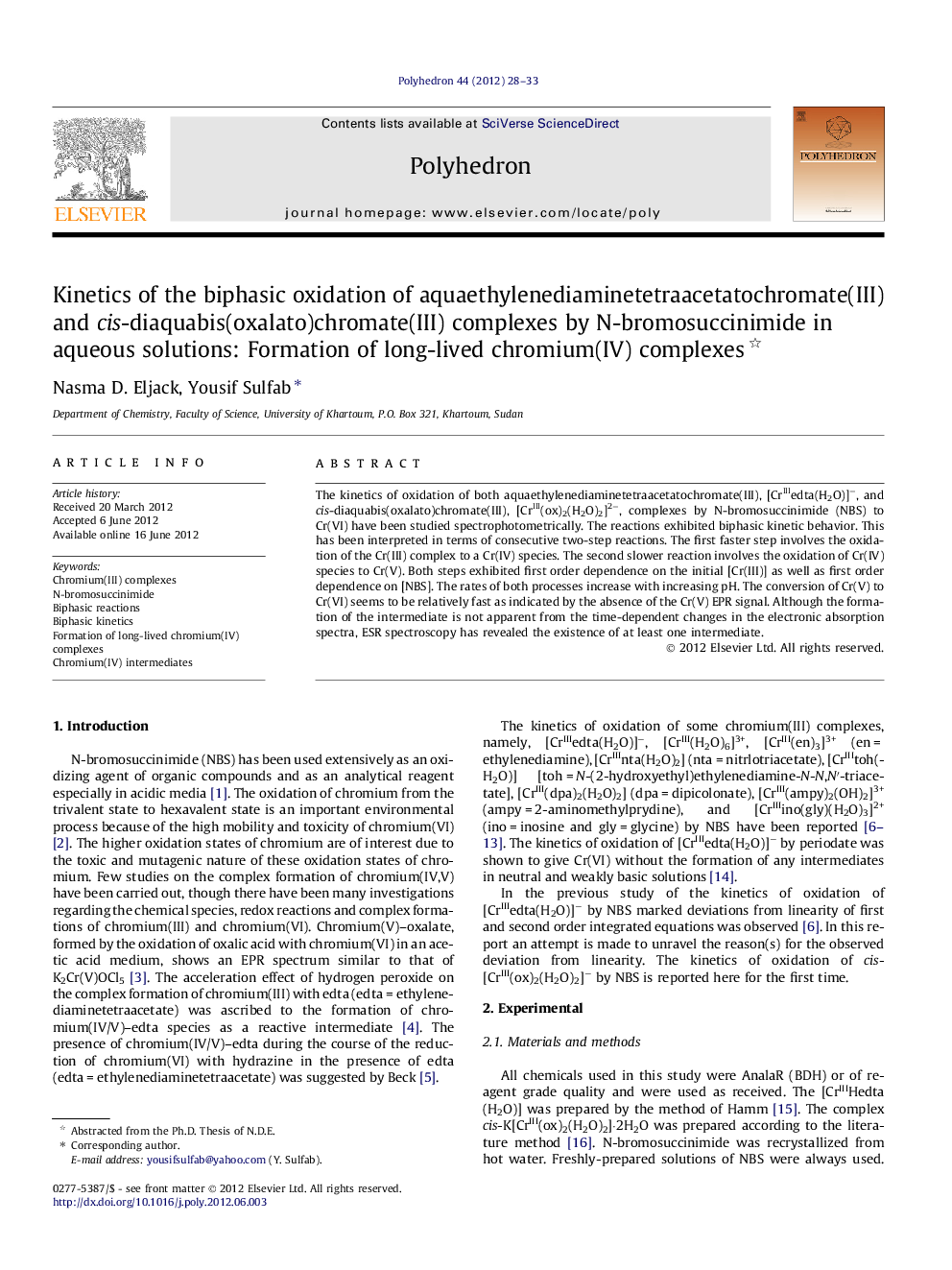| Article ID | Journal | Published Year | Pages | File Type |
|---|---|---|---|---|
| 1334721 | Polyhedron | 2012 | 6 Pages |
The kinetics of oxidation of both aquaethylenediaminetetraacetatochromate(III), [CrIIIedta(H2O)]−, and cis-diaquabis(oxalato)chromate(III), [CrIII(ox)2(H2O)2]2−, complexes by N-bromosuccinimide (NBS) to Cr(VI) have been studied spectrophotometrically. The reactions exhibited biphasic kinetic behavior. This has been interpreted in terms of consecutive two-step reactions. The first faster step involves the oxidation of the Cr(III) complex to a Cr(IV) species. The second slower reaction involves the oxidation of Cr(IV) species to Cr(V). Both steps exhibited first order dependence on the initial [Cr(III)] as well as first order dependence on [NBS]. The rates of both processes increase with increasing pH. The conversion of Cr(V) to Cr(VI) seems to be relatively fast as indicated by the absence of the Cr(V) EPR signal. Although the formation of the intermediate is not apparent from the time-dependent changes in the electronic absorption spectra, ESR spectroscopy has revealed the existence of at least one intermediate.
Graphical abstractThe kinetics of oxidation of both aquaethylenediaminetetraacetatochromate(III), [CrIIIedta(H2O)]−, and cis-diaquabis(oxalato)chromate(III), [CrIII(ox)2(H2O)2]2− by N-bromosuccinimide is biphasic. The reactions proceed by consecutive one electron transfer processes: Cr(III) → Cr(IV) → Cr(V). The conversion of Cr(V) to Cr(VI) is believed to be fast. The rate constants are obtained by computer simulation. The formation of Cr(IV) is detected by EPR spectroscopy.Figure optionsDownload full-size imageDownload as PowerPoint slide
